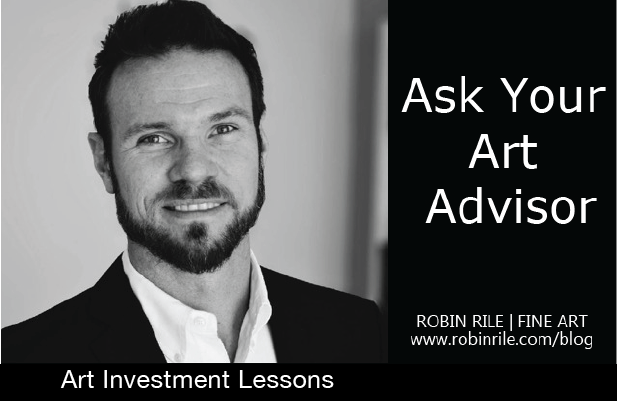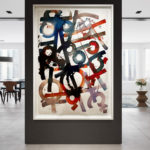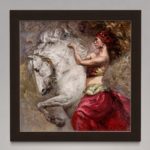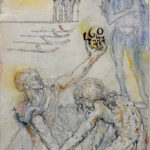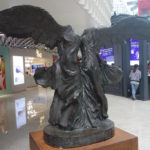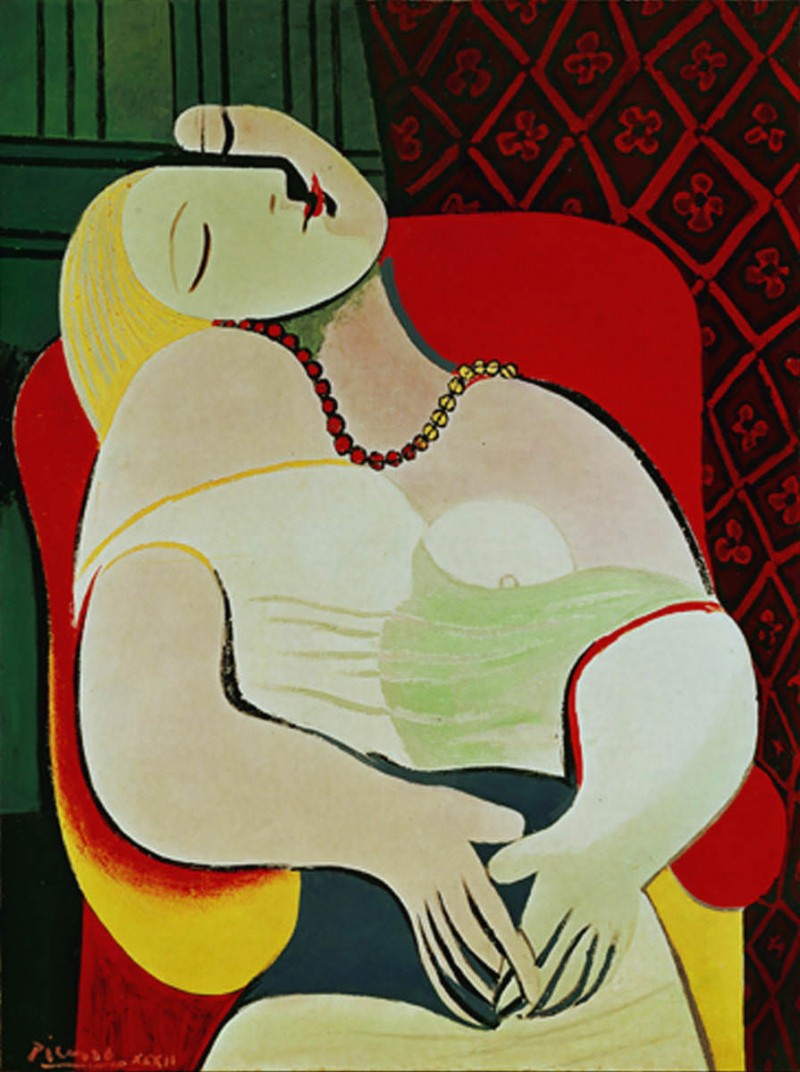
An actual letter sent to a client by Reed V. Horth, for Robin Rile Fine Art
Dear B,
Thank you for your email about “investment-level” artworks. Now, I will start by saying that art should not necessarily be bought solely for investment. While everyone’s motivations are different, as a collector myself, I feel there should be some element of passion (Call it pride, love, history or some other motivator) which triggers your purchase. The reason behind an element of pragmatism is that we, as dealers, cannot predict the future. We can merely let you know what we have seen in the past. This being said, I have had several clients do very well on their investments in fine art over the past many years. In the last 10 months, I had a collector flip a prominent original oil from a 20th Century master from $825k to $1.3M in less than 30 days. Another client bought a work at $278k and sold it six months later at $745k. Another bought at $1.78M and the work is now being offered above $5M. Works under $100k always have a few question marks as to their prospective upside. However, the further you ascend above $100k (and provided the work meets certain criteria), the fewer questions surmount as to whether or not it will work is a sanguine investment.

This actually reminds me of a story: My wife and I were recently touring one of our collector’s beautiful homes, when he volunteered a story about the large Pablo Picasso oil which hung gracefully in front of us. The young woman in the portrait, he noted, was an exercise that fit somewhere between tremendous luck and outright stupidity. It turns out that he, as a young newlywed initially making his way in the business world, went on a business trip to Paris in 1974. He was entertaining some of his colleagues and prospective investors who were avid art collectors, when they all walked into a prominent gallery and stumbled upon the young Picasso maiden. Paint still dewy, the price was bandied about by the elder statesmen as they chided the young man in their midst. With a flourish, my client said… “I’ll take it”.
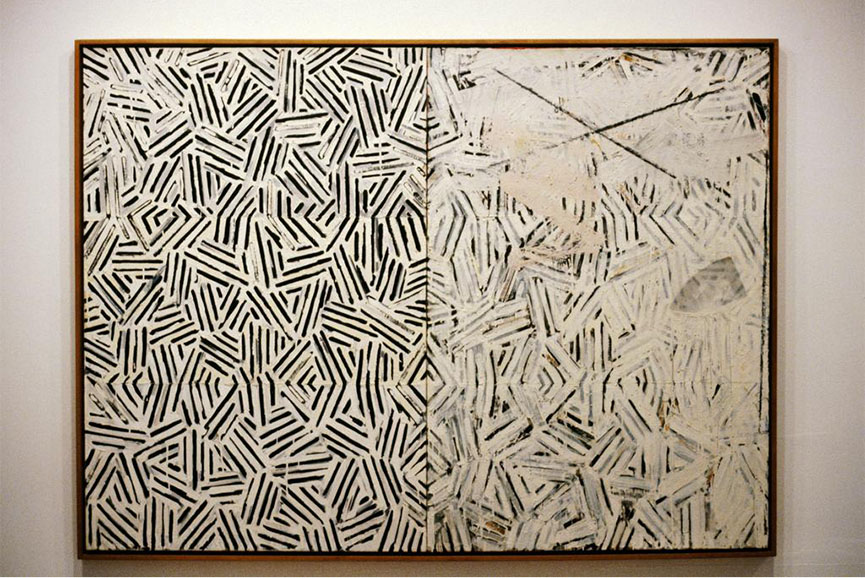
“It” was $94,000, and encompassed the vast majority of the funds he and his new wife had set aside for their new home.
A bittersweet pill for his new bride, who blanched at the cost of this “hideous” thing (as Picassos of the late 1960’s were often thought of), he showed up at their modest apartment with a new contract from his duly impressed investors… and a four-foot by three-foot Picasso. A conservative estimate on this painting could place it somewhere between $10-15M USD today. Intervening years have proven to the young bride how sanguine the investment was, as the work has thrived during nearly 40 years of appreciation historically, aesthetically and, of course, monetarily.
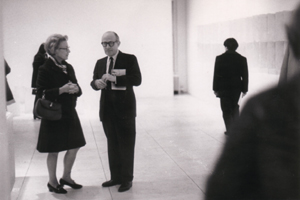
We cannot all have the foresight of my client. His was an extreme case and, as the sum in 1974 would have equated to some $429,000 in today’s dollars. However, the buyer had both wherewithal and means to make a purchase of a known commodity which he felt would be a good investment. What is more… he went with his gut. He knew this was the right move which would pay dividends in the future.
Perhaps you are not a collector who wishes to (or can) spend nearly a half million dollars (or more) on a given work of art for your home. Truth is, very few of us are. But, when you are, how do WE find these artists before they become this level? How do we find a Picasso when he is still a relative nobody? Well, there is no iron-clad tried and true method of finding a diamond in the rough, or the proverbial needle-in-a-haystack. What we can do is notice trends in both buyers and sellers and try to anticipate what are motivating factors for each. All artists want to sell, it is the nature of the craft. Not all buyers want to buy though, whether they know it or not. Through studying buyer trends since 1996, you notice certain trends though we have noticed a few key plateaus.
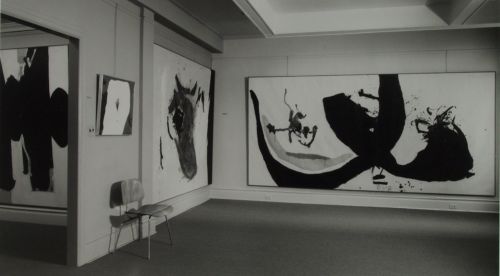
1. Collectors buy items below $5,000 based purely on the visceral reaction to the work and with no preconceived notions about the work being an investment.
2. Between $5,000-$10,000, some collectors will buy on impulse and others will weigh a potential investment side.
3. Above $10,000, anyone who is purchasing anything at this level is an investor in something, be it real estate, stocks, funds, art, etc. Therefore the criteria with which they gauge their art purchases must be weighed and buttressed with the same sound rationale they use in their investment purchases, even if they never expect to sell the work and/or expect it to ascend in value.
4. Above $100,000, this is a serious investor who will scrutinize trends in all purchases and have some expectation of ROI.
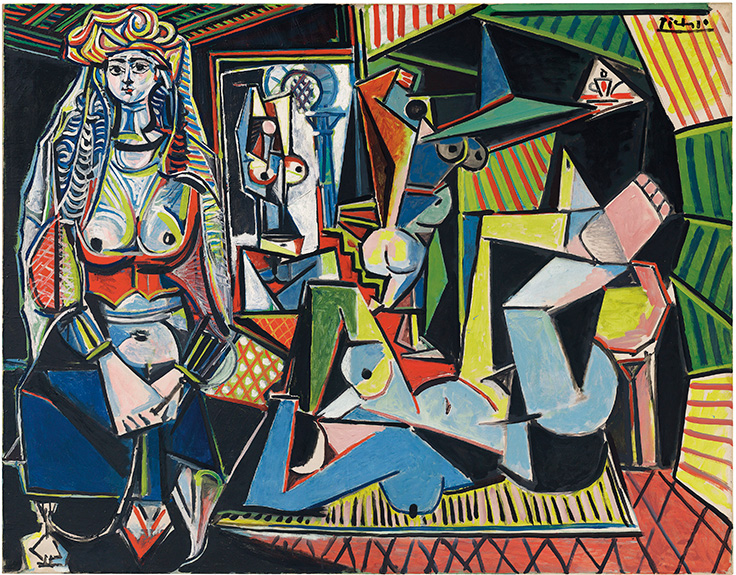
Provided the pricing we present meets the levels of expectations of our prospective buyers, we then know what information and buttressing will be required to make the purchase sanguine for the buyer. As pricing ascends, so does the importance on documentation and peripheral information, trends, comparables, etc. This is the same care an investor would take if they were investing in anything else, so the same level of scrutiny should be expected. Outside firms who can operate at arm’s length are often brought in to provide analysis and prospective, but there are often conflicts of interest which mar these findings. So, just as in other investments, the buyer often must rely on his/her own instincts to make decisions that may be beneficial to them in the future. While we do not all know as much technical data as we might like about the products we are investing in (whether they be pharmaceuticals, real estate, funds, etc.) we do tend know a good deal when we see it.
Provided that all of the “I’s” are dotted and “T’s” are crossed, all that remains are our instincts… Our guts.
Best always,
Reed
Reed V. Horth, is the president, curator and writer for ROBIN RILE FINE ART in Miami, FL. He has been a private dealer, gallerist and blogger since 1996, specializing in 20th century and contemporary masters
“Ask Your Art Advisor: Art Investment Lessons” by Reed V. Horth ©2016 ROBIN RILE FINE ART. Any unauthorized reproduction of images, text or content is strictly prohibited.

